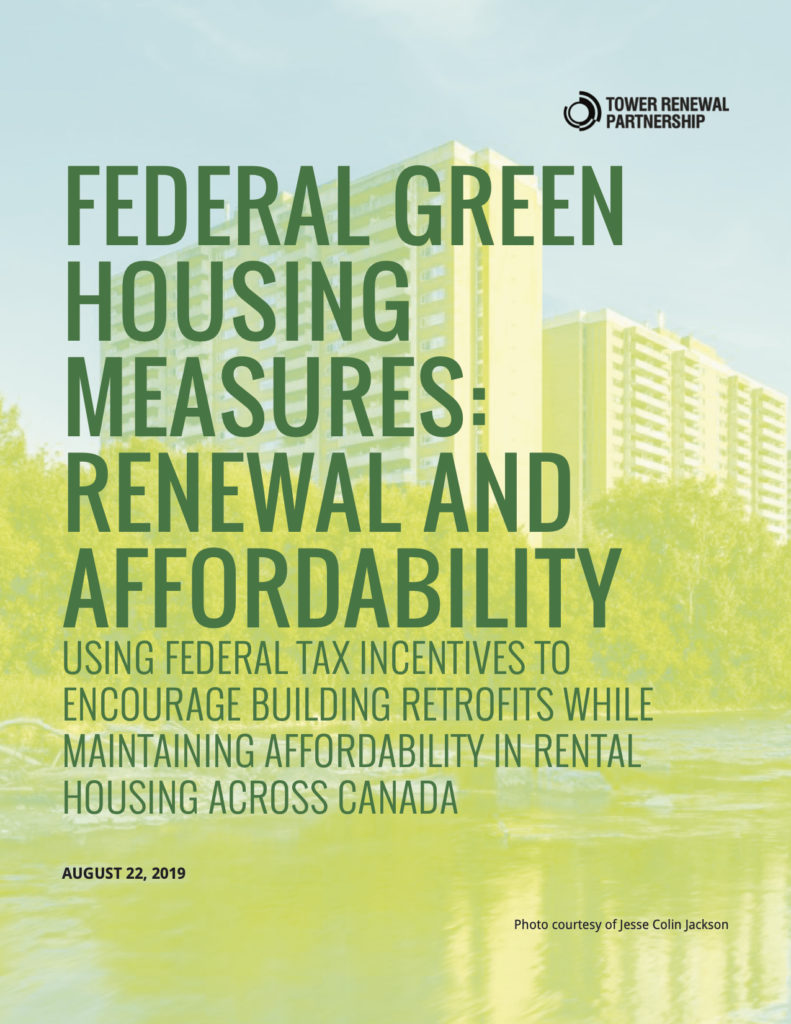In August, the Tower Renewal Partnership (TRP) conducted new analysis on incenting nation-wide comprehensive tower retrofits. In particular, tax incentives were modelled and evaluated to understand how they could be used to achieve public policy goals around affordability and renewal. As the federal election approached, this analysis, coupled with existing TRP research formed a suite of federal policy recommendations to further advance and implement wide-scale tower renewal.

The advantage of working with tax incentives to address policy priorities like GHG reduction and affordability is that, if done correctly, they can be accomplished with minimal additional government investment by leveraging the existing federal tax infrastructure and relying on clear economic incentives (credits) and bright line penalties (recapture of credits).
The TRP had previously completed comprehensive financial modelling based on reference data for a number of owner types and retrofit types. Using different building owner types (private non-profit, small, mid-sized, large private investment funds and publicly traded owners) and an assortment of building conditions (rents, repair needs, state of repair/retrofitting), ‘typical’ cases have been created for evaluation. These cases have then been modelled to analyse the economic impact of retrofitting on revenues, rents, profits and asset values, and to assess economic motivations and thereby identifying funding shortfalls.
This scope of this report includes:
- Examining the cost of retrofit levels, from base state of repair to best in class low-impact and healthy housing;
- Testing the financial capacity of various building owners to engage in retrofits;
- Assessing the motivations and financial capacity of not-for profit and for-profit owners to undertake retrofits;
- Testing the use of tax system changes, loans, grants, and low-interest financing to close financial gaps and stimulate retrofit activity across a wide range of owner types.
Key takeaways and policy recommendations include:
- An affordable housing renovation tax credit be developed allowing for the value of 15% of the cost of renovations for each of five years, pending guarantee of affordability and building performance criteria (as described in Section 3.2.4 and Section 3.2.5);
- An affordable rental sale and acquisition capital gains tax incentive be developed (as described in Section 3.2.3);
- These measures be coordinated with existing programs such as those provided through the National Housing Strategy (NHS);
- Complementary measures as described in Section 3.3 be developed to support broader affordable housing retrofit activity. This includes:
- Support of deep and complete retrofit demonstration projects;
- Support of capacity development, including trades training, practice guides, research and development, and widespread awareness campaigns for design, construction and building operations professionals.
Read the full report here.